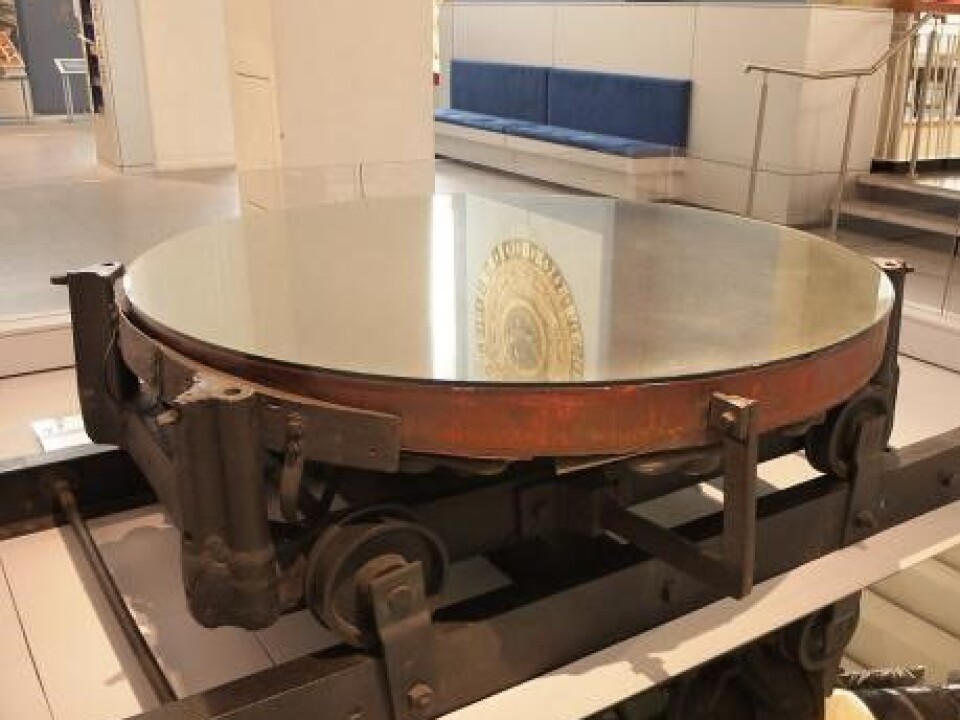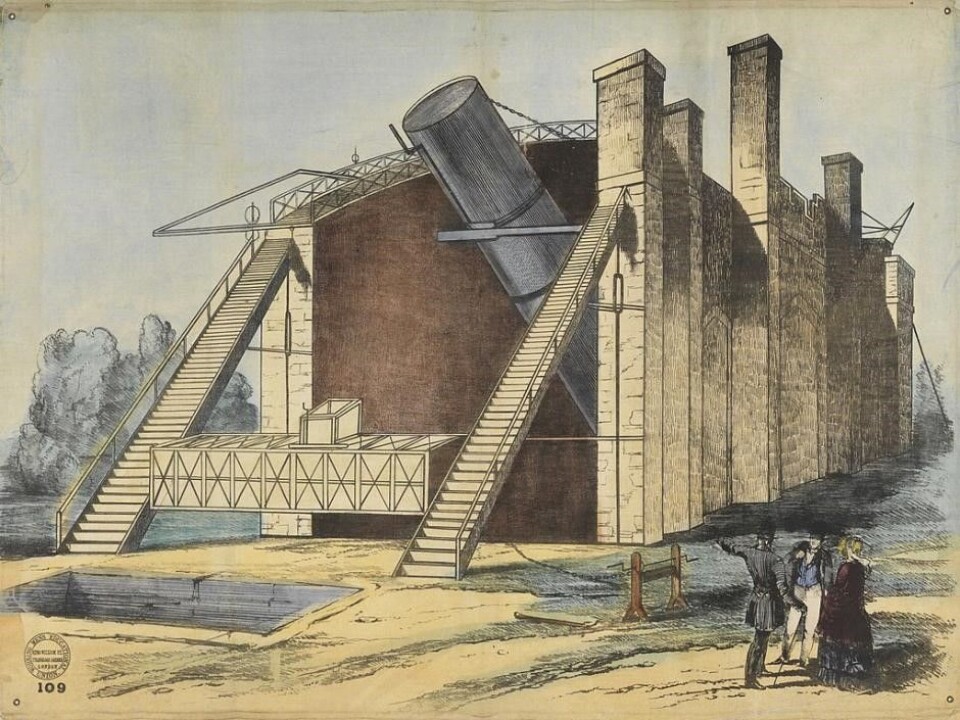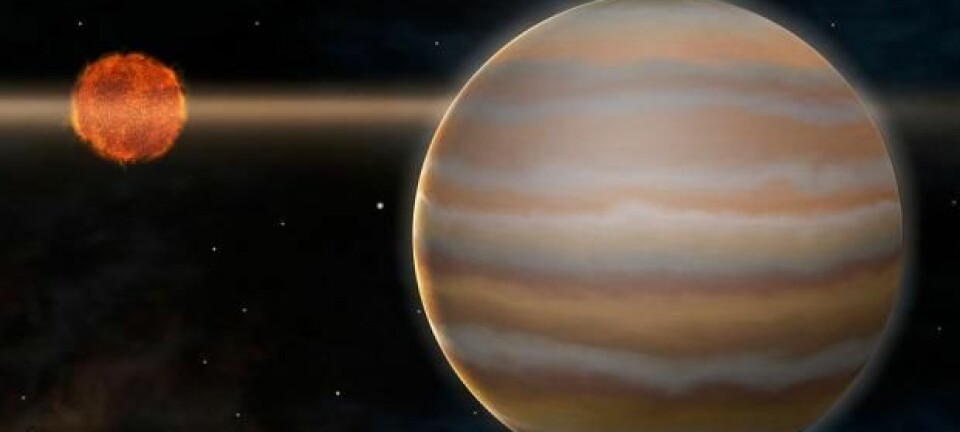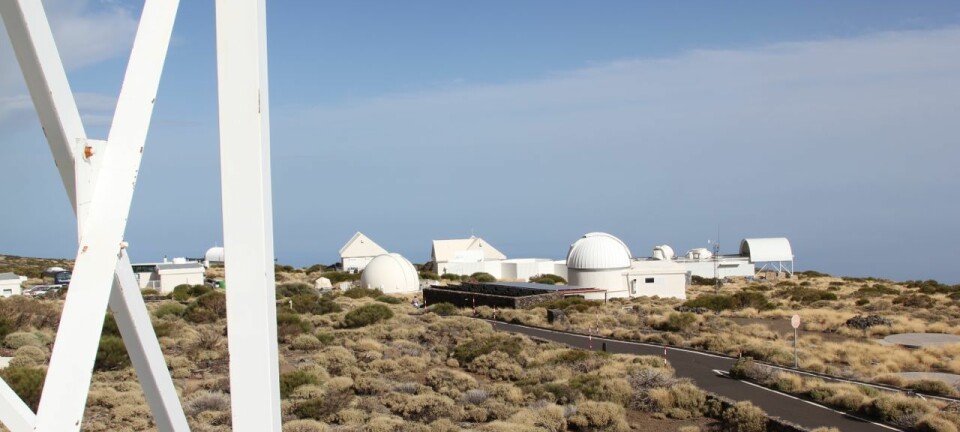
Ireland becomes western most site of world's largest radio telescope
Birr Castle in Ireland was a centre for astronomical research 170 years ago, and the story continues with the construction of the I LOFAR telescope.
‘Close encounters of the Birr kind …’
The inspiration for this headline from the Irish Daily Mail came of course from the famous science fiction movie ‘Close encounters of the third kind’ – about our meeting with an alien civilization. The occasion was the inauguration of a new radio telescope on the outskirts of the large park around Birr Castle, Ireland.
Birr is a relatively small town in Ireland, almost a village, located a few hundred kilometres west of Dublin. And Birr Castle has roots dating back to the Middle Ages.
The new radio telescope, bearing the name I LOFAR, was inaugurated in the very same park where the Third Earl of Rosse built the largest astronomical telescope in the world in 1845.

Read More: New Greenland telescope is up and running
I LOFAR is part of the world's largest network of radio telescopes
The new radio telescope is just the latest contribution to what is the largest network of radio telescopes in the world, called ‘The International LOFAR Telescope,' which is headquartered in the Netherlands.
The network is distributed around Europe with 38 antenna stations in the Netherlands, six in Germany, three in Poland, and single antennas in France, Sweden, and England.
The telescope is called I LOFAR, where ‘I’ stands for Ireland, and ‘LOFAR’ stands for LOw Frequency Array. The name refers to the frequency range of the telescope between 10 and 240 MHz: the low frequency part of the radio spectrum.

With the new telescope Ireland is now the western most antenna in the network.
LOFAR combines signals from the entire network, creating a unified radio telescope with an extent of about 2,000 kilometres – a distance that stretches from Ireland to Poland or Sweden to France.
This makes the LOFAR telescope the world's largest radio telescope. The individual antenna systems can observe selected areas only, but they can also be joined by several thousand kilometres of fibre net that make it possible to collect observations on a large supercomputer in Groningen, Netherlands.
In this way, it is possible to get sharp and very detailed images of the distant universe, looking back to a time shortly after the Big Bang, when the first stars and galaxies were formed.

Read More: New space telescope will reveal the light of the first stars and galaxies
Mirrors the size of a football field
The Irish radio antenna on the outskirts of the Birr Castle grounds does not immediately resemble a radio telescope. There is no large satellite dish, which can be directed to an area of the sky, for example.
Instead, it consists of just under 200 single panels, resembling a photovoltaic system, covering an area the size of a football pitch. These panels work like radio mirrors that direct the radio waves down to about 1,500 dipole antennas, capturing the radio waves and then sending a signal to a computer.
Several students, mostly in physics and astronomy from the University of Dublin, helped to construct the radio facility.
Together with leading engineers, they traded their theoretical studies to dig ditches, lay cables and panels, and assemble the many dipoles to the entire facility.

The new radio telescope is already in action. It has been used to follow the Sun during a very active period when it emitted bursts of coronal mass ejections. Here, enormous clouds of gas are ejected from the Sun's outer atmosphere.
Read More: PhD students find 95 new planets
Old mirror telescope was the world's largest
The new radio telescope was inaugurated in July. And the current Lord of Birr Castle – the 82-year-old seventh Earl of Rosse, William Brendan Parsons, was invited to the ceremony.
Perhaps, he thought of his ancestor the third Earl of Rosse, William Parsons (1800-1867), and his large 1845 mirror telescope, which is still visible from the windows of the Castle.
His ancestor was an enterprising gentleman. He had a university degree in mathematics from Oxford University, UK, and was a trained engineer. He had a keen interest in astronomy, and so built a telescope in the large park around the castle.
He started by building a few smaller telescopes, before the construction of the 1.8 metre mirror telescope. At that time, it was the largest telescope in the world.
He hired a workforce of 500 men – an impressive employment opportunity it was then a rather impoverished country. Workshops were built on the grounds of the castle, where Lord Rosse designed the telescope and supervised the work, which took three years in all.
The result was impressive: a 16-metre-long telescope, which at one end contained the home-cast 1.8-metre mirror with a weight of 3 tons and a thickness of 13 centimetres. The entire telescope weighed 12 tons and were enclosed by two walls, each 12 metres high and 21 metres long. The walls were placed seven metres apart.
The telescope was connected to the walls via a cunning system of pulleys and weights, which would keep it in balance and made it possible to direct it to a desired place in the sky. The observer sat in an impressive gallery of wood that could be moved up and down or sideways, depending on the direction of the telescope.
Read More: Stephen Hawking: Master of the Multiverse
A new view of the universe
Lord Rosse could now begin to observe the heavens.
Of course, the telescope was turned to the known planets of the solar system like Jupiter and Saturn, but he really wanted to learn more about the many nebulae in the sky, which was the generic name for anything that wasn’t a star or a planet.
In 1845, astronomers thought that the Milky Way was the entire universe. Furthermore, it was not possible to determine distances in space outside the solar system. So astronomers thought that these nebulas were part of our Milky Way.
It was also before astronomers could equip the telescopes with a camera, so Lord Rosse had to draw what he observed.
He produced many detailed sketches of the Milky Way nebulae such as the Crab Nebula and the Owl Nebula. But he was especially interested in spiral-shaped, which he drew in great detail. He might even have wondered whether these spirals were independent stellar systems outside of our Milky Way.
Rosse had no way to decide whether a nebula was part of the Milky Way or not. That question was first answered more than 70 years later, when Edwin Hubble began to study the universe in the 1920s. His observations showed that many of the nebulae were independent stellar systems outside our Milky Way - what we today call galaxies.
This breakthrough in astronomy occurred from the newly built Mt Wilson Observatory in California. Mt Wilson has a mirror of 2.5 metres and went into service in 1917. Until then, Birr Castle was home to the largest telescope in the world.
But imagine if 19th century European astronomers had taken over the old telescope and improved it…
Read More: How do scientists find new planets?
The tradition lives on
Rosse’s son continued his father’s astronomical hobby. Laurence Parsons the fourth Earl of Rosse, added a special instrument called the 'Lunar Heat Machine' to the astronomical collection. With this instrument he tried to collect moonlight with the purpose of determining the lunar temperature.
Hereafter the family’s interest in in astronomy waned, and the splendid old telescope fell into disrepair.
But the current Earl and his wife, Brendan and Alison Parsons, began extensive restorations in the 1990s, so that both the family and the many visitors to the castle could once again experience the old telescope in all its former glory.
In addition, the construction of a science museum is planned inside the castle, where visitors can experience the astronomical work on Birr Castle and explore the Parsons family’s engineering and horticulture.
The castle, grounds, and science musem are open year-round. it is loked roughly midway between Dublin and Galway, near to Tullamore.
----------------
Read the Danish version of this article at Videnskab.dk









